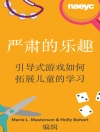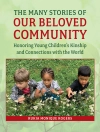It’s No Biggie: Autism in the Early Childhood Classroom is designed as an introduction for preschool teachers, childcare workers and others working with young children to best practices in working with all children, but most notably with those on the autism spectrum. The book contains background information on effective early childhood practices, with an emphasis on students who are or may be on the autism spectrum. The very knowledgeable and experienced authors present an overview of autism, specific strategies for the classroom teacher now dealing with those on the autism spectrum, as well as interesting and insightful vignettes that bring these strategies to life. Chapters on the special education process, working with parents and with other professionals, and facing the challenges presented in working with young special needs children provide practical suggestions for both experienced educators, and those new to the world of special education.
Tabella dei contenuti
Introduction
Forward
PART ONE- AUTISM BASICS
Chapter 1–The Teacher’s Perspective – Keys to Understanding
Sensory Processing
Communication
Social Skills
Chapter 2–The Child’s Perspective – Developmentally Appropriate Practice
The Child Centered Classroom
The Physical Environment
The Social-Emotional Environment
The Cognitive/Learning Environment
Chapter 3– The Parent’s Perspective – Realities and Responsibilities
PART TWO– BEYOND THE BASICS
Chapter 4- Behavior
Chapter 5- Understanding and Accommodating
Communication Strategies
Teaching Social Skills
Sensory Strategies
PART THREE– TEACHING TECHNIQUES
Chapter 6- Teaching Through Activities
Play
Reading
Prep Chats©, Action Chats©, and Choices Chats©
Music and Movement
Chapter 7- Your Teaching Toolbox
Goal Setting
Appropriate Equipment
Predictability
Scheduling
Coping Strategies
Task Analysis
Visual Supports
Rewards and Reinforcers
Peer Helpers
Pets are Positive
Chapter 8- Sharing Our Strategies
Elopement
Aggression
Random Verbalizations
Self-injurious Behaviors
Sound Related Issues
Issues Caused by Visual Stimuli
Problems Caused by Touch Stimuli
Body Awareness Problems
Balance Problems
Smell Related Issues
Self-stimulation
Anxiety
Meltdowns
Temper Tantrums
PART FOUR — RESOURCES
Chapter 9- Tap Your Team
Chapter 10- Embrace the Process
Chapter 11- Tap Your Sources
Chapter 12- Learn the Lingo
Parting Words












